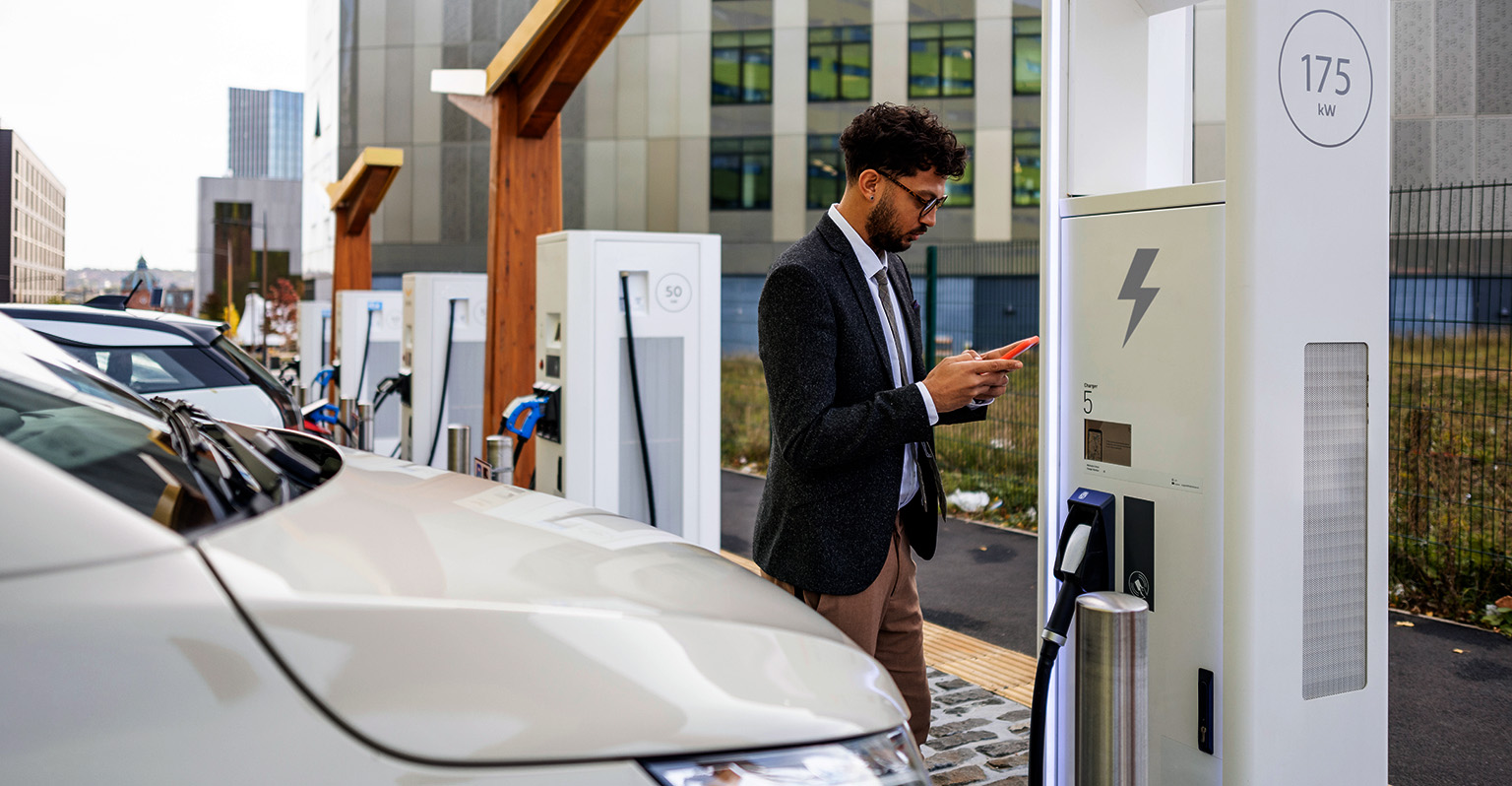Future-proofed charging infrastructure is approaching 500kW in the U.S. – how quickly can OEMs respond with fast-charging batteries?

The U.S. DC fast-charge network is rapidly advancing in terms of coverage and power availability. Ranked as the world’s seventh largest EV market in terms of percentage uptake over total car sales1, the U.S. had only a fraction of the fast-charge infrastructure that China did in 2022 – 28,000 fast chargers to China’s 760,000, to be exact2.
Realising the ambitions of ever-higher power EV charging requires consideration of all parts of the energy delivery system, from the charging infrastructure through to the cable and connector and finally to the batteries inside the vehicle.
Phase 1: Upgrading Rapid DC Infrastructure
Using a fitting line from Field of Dreams, U.S. EV charging infrastructure players are taking a “If you build it, they will come” approach to upgrading their fast-charging stations to as high as 500kW, which is still 150kW more than any EV on the road can accept today. The strategic play by Gravity Inc launching their Manhattan public charging garage is the most recent example of future proofing rapid charging infrastructure in dense, urban cities to make way for the next evolution of fast-charging EV battery technology to be commercially viable.
Currently, the limiting factor to fast-charging EVs is the battery system inside the vehicle. As Moshe Cohen, CEO of Gravity Inc, put it, “Automakers love to tout their EVs’ top driving speed, but what matters more than anything for drivers is how fast a car can charge.”3
Phase 2: Upgrading High-Power Connectors
For passenger EVs, the maximum 500A capability of the European standard Combined Charging System (CCS2) connector limits 800V nominal battery systems to charge at around 400kW (500A x 800V=400kW). In North America, Tesla’s North American Charging Standard (NACS) connector is rated up to a megawatt 4 and is being adopted by other vehicle manufacturers such as Ford for electric vehicles sold in the North American market 5. Heavy-duty commercial trucks require much higher power levels and as fleet electrification is on the rise, the Charging Interface Initiative, or CharIN, the industry standardization organization behind CCS2, is already working on new connector standards such as the Megawatt Charging System (MCS) which will increase connector power capability significantly 6.
Phase 3: Upgrading Power-Dense Batteries
When it comes to delivering up to 500kW of direct current to an EV, available grid power is only as good as the power capability of the battery pack. Historically, this has created confusion when EV drivers plug into a charging station branded as e.g. 350kW and the power delivered is much lower than this. In this case, it is typically the car battery management system which is demanding a reduced rate to protect the EV battery from damage.
A typical lithium-ion battery found in a Lucid Air today can accept up to 350kW of charging power7. For an OEM to offer a line of vehicles capable of receiving a future standard of 500kW at a public charging bay, they would need to either oversize the normal lithium-ion battery pack which adds significant cost and weight to the vehicle or look to new innovations in battery chemistry which can accept, store, and deliver high-power rates of at least 500kW.
Nyobolt knows a thing or two about producing high-power dense battery systems for automotive applications. Our Ultra anode cells can be stacked modularly to produce 35kWh battery packs or larger for EVs, capable of operating at well beyond 500kW and charging in less than six minutes. You can read more here how we’ve leap-frogged existing lithium-ion battery technology and are ready to roll out the next generation of rapid public charging infrastructure.
Putting aside known limitations with current CCS2 and the adoption of NACS connectors, passenger EVs plugging into a 500kW DC ultra-rapid charger today will typically be charging at a maximum 2C rate for traditional lithium-ion battery packs. A C rate is a measure of how quickly a battery can charge and discharge. For example, a 2C battery could charge in about 30 minutes. By comparison, Nyobolt’s Ultra battery technology is already commercially available with an incredible 10C charging rate, giving a full charge in less than six minutes.
Summary
If we continue down the current trajectory, as charging capacity in public stations continues to increase, traditional lithium-ion EVs will require much larger, heavier and costlier battery packs capable of charging at higher rates up to and beyond 500kW. On an alternative route, with new innovations in high-power lithium-ion batteries capable of charging at 5x rates of 10C, one could replenish the same amount of range per minute with a smaller, lighter, more efficient battery pack. In dense city centers, rapid charging in minutes without lugging around a lot of excess weight will be a major facilitator to electric urban mobility, especially for work vehicles such as taxis, Ubers and last-mile delivery vans.
Sources:
1 https://www.electriccarscheme.com/blog/the-countries-with-the-best-ev-uptake-why-are-some-moving-faster-than-others
2 https://www.statista.com/statistics/571564/publicly-available-electric-vehicle-chargers-by-country-type/
4 https://www.tesla.com/blog/opening-north-american-charging-standard
5 https://media.ford.com/content/fordmedia/fna/us/en/news/2023/05/25/ford-ev-customers-to-gain-access-to-12-000-tesla-superchargers–.html